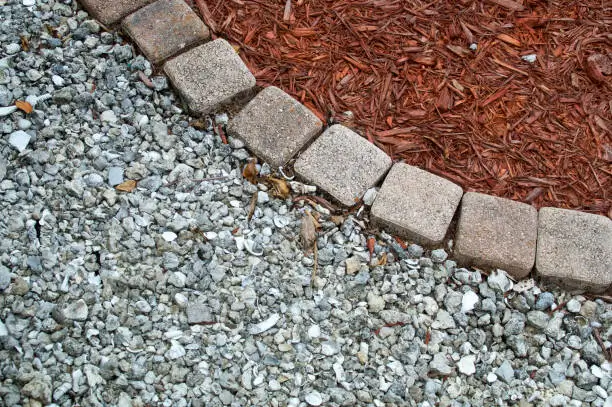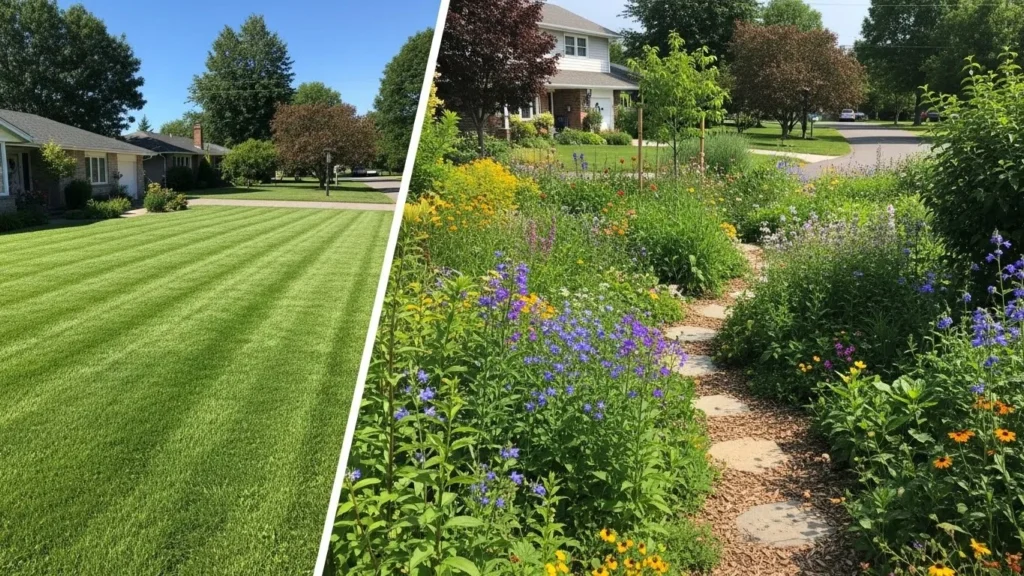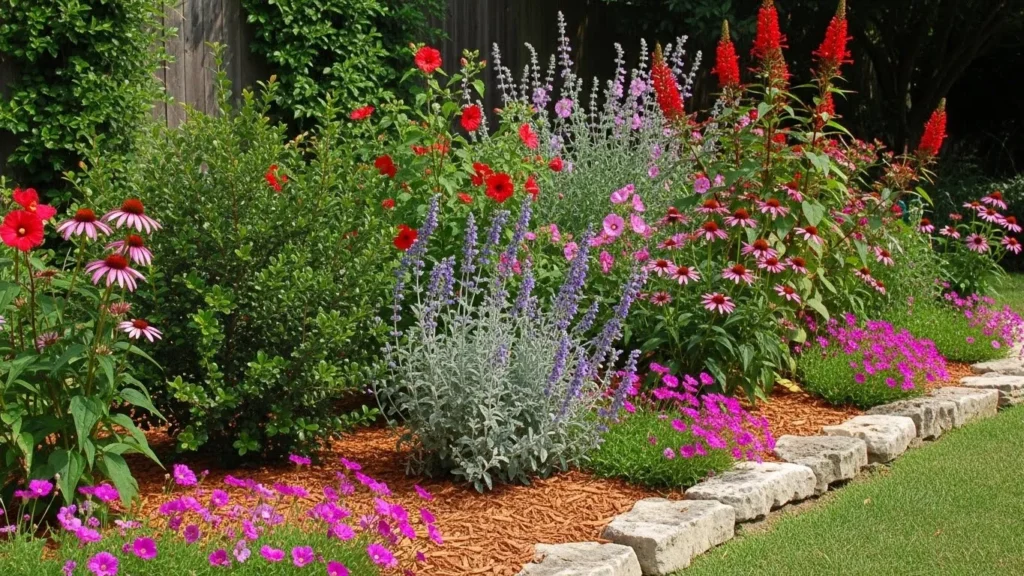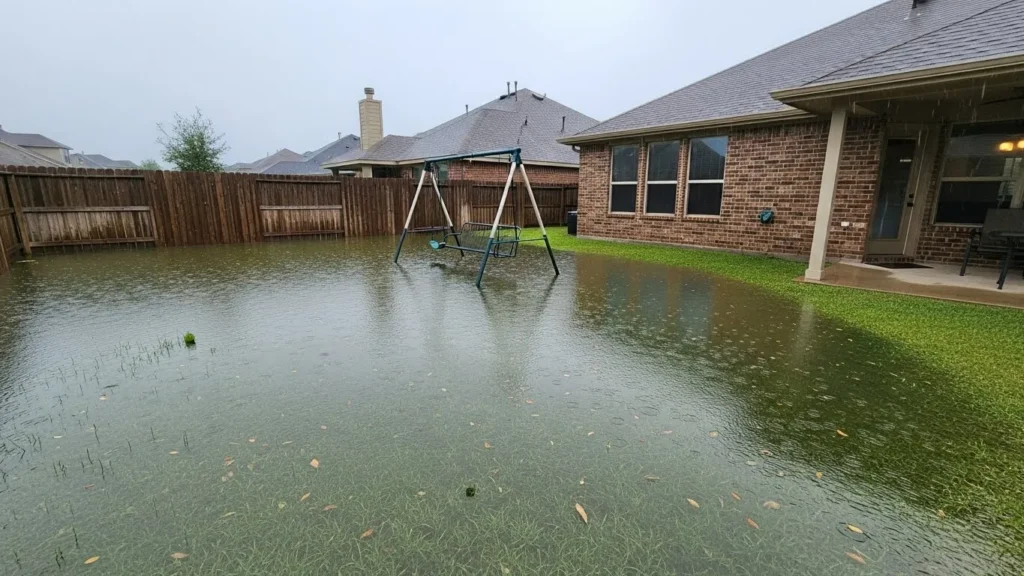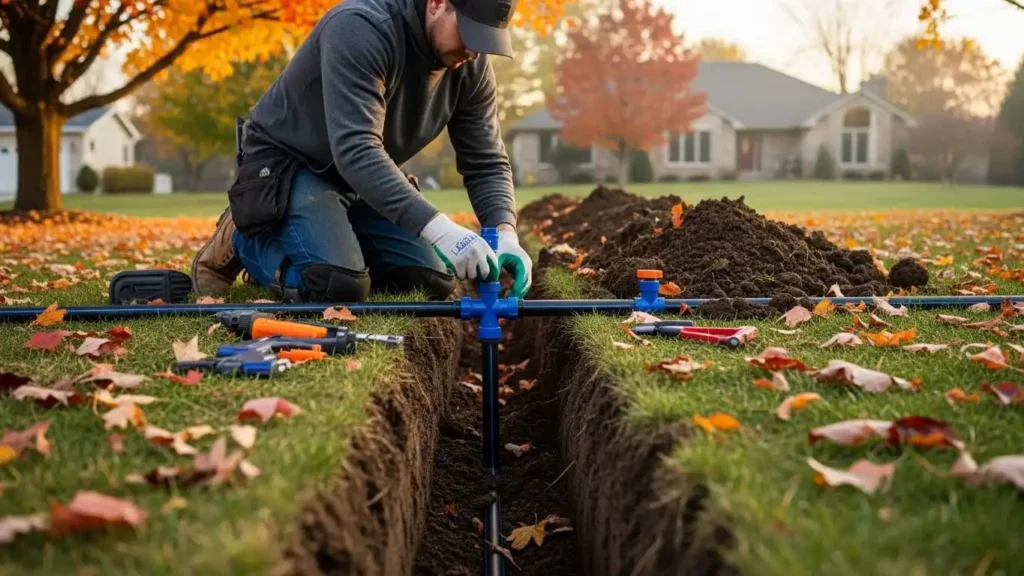Which option is best for creating a low-maintenance yard – gravel or mulch? Find out which suits Texas weather best.
Creating a beautiful, low-maintenance landscape in Texas is a smart way to conserve water, lower upkeep, and build a yard that thrives year-round. Whether you’re designing a new xeriscape or upgrading your current layout, one key decision will shape both the look and performance of your landscape – gravel vs mulch landscaping.
Both materials offer unique advantages in terms of cost, longevity, moisture control, and visual appeal. The right choice depends on how you want your xeriscape ground cover to function in Texas’s unique climate. In this guide, we’ll break down everything you need to know to make the best decision for your outdoor space.
Table of Contents
ToggleWhat Is Xeriscape Ground Cover and Why It Matters
Ground cover is a foundational layer that directly impacts your yard’s health, performance, and long-term sustainability. In xeriscaping, where the goal is to create low-water, low-maintenance environments that thrive with minimal intervention, choosing the right ground cover can make or break the design.
Unlike turfgrass, which requires frequent watering and mowing, xeriscape ground cover is meant to support efficiency and resilience. The right material helps suppress weed growth, maintain consistent soil temperatures, and reduce evaporation – all essential in a hot, dry climate like Texas. It also contributes to improving biodiversity, especially when it supports native plantings and encourages the presence of pollinators, birds, and other beneficial wildlife.
In a state like Texas, where drought and heat waves are common challenges, your choice of ground cover needs to strike a balance between durability, beauty, and ecological support. That’s why many homeowners compare gravel vs mulch landscaping to find the solution that aligns with their specific goals.
Pros and Cons of Gravel
Gravel is a popular choice for many Texas homeowners, and for good reason. It delivers a sleek, contemporary look and holds up exceptionally well in hot, arid climate.
One major advantage of gravel is its durability. It doesn’t break down, fade, or wash away easily. If you’re looking for a low-maintenance solution that will hold up for years, gravel is a smart investment. It’s also great for walkways, patios, and borders where visual definition and drainage are key.
That said, gravel isn’t perfect. It can absorb and radiate a lot of heat, making surrounding areas warmer in summer. It also doesn’t help plants retain moisture, which means it may not be ideal for beds with drought-tolerant greenery. While it lasts a long time, it does have a higher upfront cost and may shift without proper edging.
Pros and Cons of Mulch
Mulch offers a more natural, earthy appearance and brings several benefits to your xeriscape ground cover strategy. It helps insulate the soil, retain moisture, and contributes to the natural breakdown of materials that enrich the soil and promote long-term plant health. If your xeriscape includes trees, shrubs, or native flowering plants, mulch can help them thrive by creating a supportive environment at the root level.
Another bonus is cost. Organic mulch is generally more affordable than gravel at installation, making it a great option for large plant beds or budget-conscious homeowners.
The downside? Mulch breaks down over time and will need to be replenished. It’s also lighter than gravel, so heavy rains or windstorms can displace it. In humid conditions, mulch can harbor mold or attract insects if not properly maintained.
Gravel vs. Mulch: Side-by-Side Comparison
Choosing between gravel and mulch landscaping really comes down to what matters most to you – budget, aesthetics, long-term care, or plant health. Both materials offer unique benefits for xeriscape ground cover, and understanding how they compare across key factors can help you make the right call for your yard.
From a cost perspective, mulch is typically the more budget-friendly option upfront. It’s easy to source and install, making it a budget-friendly option for covering large areas. However, mulch breaks down over time and typically needs to be replaced every one to two years. Gravel, while more expensive upfront, is incredibly durable and may not need to be refreshed for decades, making it the more cost-effective option in the long run.
When it comes to water retention, mulch takes the lead, especially in areas with lots of plants. It helps soil stay moist longer after watering or rainfall, reducing the need for frequent irrigation and supporting plant roots during dry spells. Gravel, on the other hand, allows water to drain quickly and doesn’t retain moisture, which can be a drawback in planting beds.
In terms of maintenance, gravel is virtually hands-off once installed. It doesn’t degrade, shift much, or attract pests, making it ideal for those who want a low-maintenance yard. Mulch, although organic and beneficial, requires periodic topping off or full replacement to maintain its effectiveness and appearance.
Durability is another area where gravel stands out. It holds up well under the Texas sun, resists erosion from wind and rain, and doesn’t wash away in heavy storms like mulch can. For areas prone to runoff or high foot traffic, gravel offers a more stable, long-lasting solution.
From an aesthetic perspective, mulch delivers a soft, natural look that blends well with plantings and garden beds. It creates a warm, organic feel that complements most landscapes. Gravel, by contrast, brings a clean, structured appearance with crisp edges and sharp contrast – perfect for modern or minimalist designs.
Finally, when considering plant health, mulch clearly offers more benefits. As it breaks down, it enriches the soil with organic matter, improving structure and fertility. It also insulates roots from extreme heat and cold. Gravel doesn’t provide any of these advantages, and in fact, can raise soil temperatures, which may stress plants if not managed carefully.
Which Ground Cover Is Better for Your Texas Xeriscape?
The best choice is all about what works for your space and how you want your landscape to function. If your xeriscape leans heavily on visual elements like stone borders, cacti, or succulents, gravel might be the way to go. It offers clean lines, excellent drainage, and a modern look that pairs well with minimalist design. Gravel also works well in areas where you want a long-lasting surface that won’t need to be replaced.
On the other hand, if your landscape includes native shrubs, wildflowers, or trees, mulch may be better suited. It helps nourish the soil and supports plant health in ways gravel cannot. The insulating effect of mulch can also help plants survive unexpected temperature swings.
In many cases, a hybrid approach works best. Gravel can be used for walkways and decorative edges, while mulch fills in around plants and trees. This allows you to take advantage of both materials while enhancing the beauty and functionality of your xeriscape.
Designing a xeriscape that looks beautiful and performs well in Texas conditions takes thoughtful planning and local expertise. At Let Us Do It Landscaping, we specialize in creating low-maintenance, water-wise landscapes that reflect your personal style and thrive in the Texas climate.
Whether you’re weighing the benefits of gravel vs mulch landscaping or need help designing your entire layout, our team is here to help. We consider soil type, sun exposure, slope, and plant selection to create a custom design that works with your space.
Conclusion
Both gravel and mulch offer strong benefits as xeriscape ground cover options in Texas. Gravel stands out for its durability and low maintenance, while mulch offers superior moisture retention and plant support. The right material depends on your landscape goals, the plants you’re working with, and your maintenance preferences.
If you’re unsure which direction to take, don’t worry. You don’t have to figure it out alone. Let Us Do It Landscaping will guide you through the process and help you choose the best combination for your yard. Visit Let Us Do It Landscaping today and take the first step toward a xeriscape that works as hard as you do.
